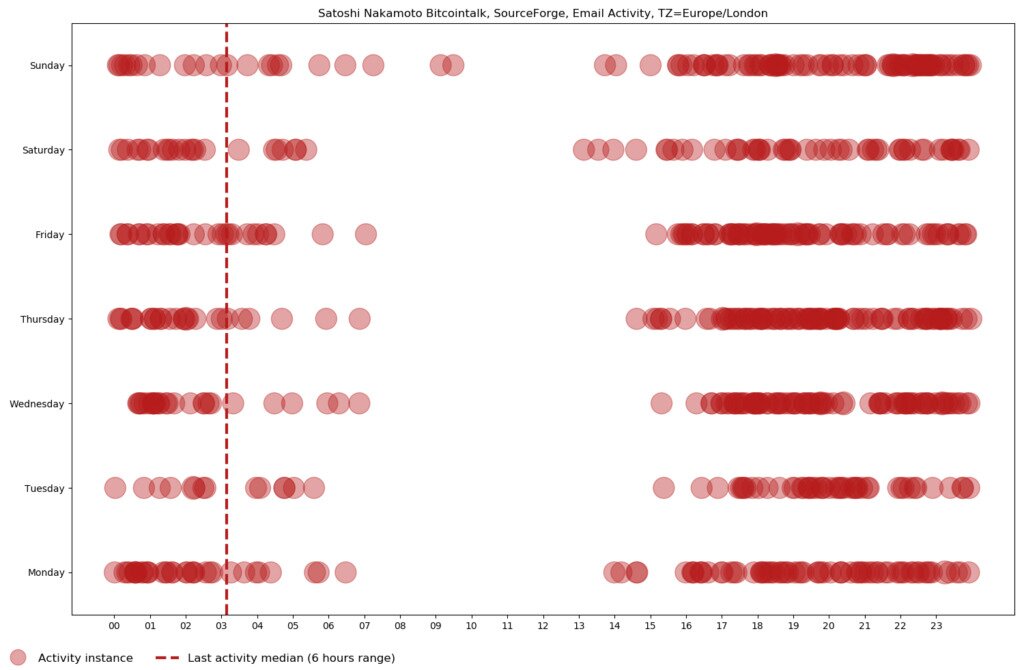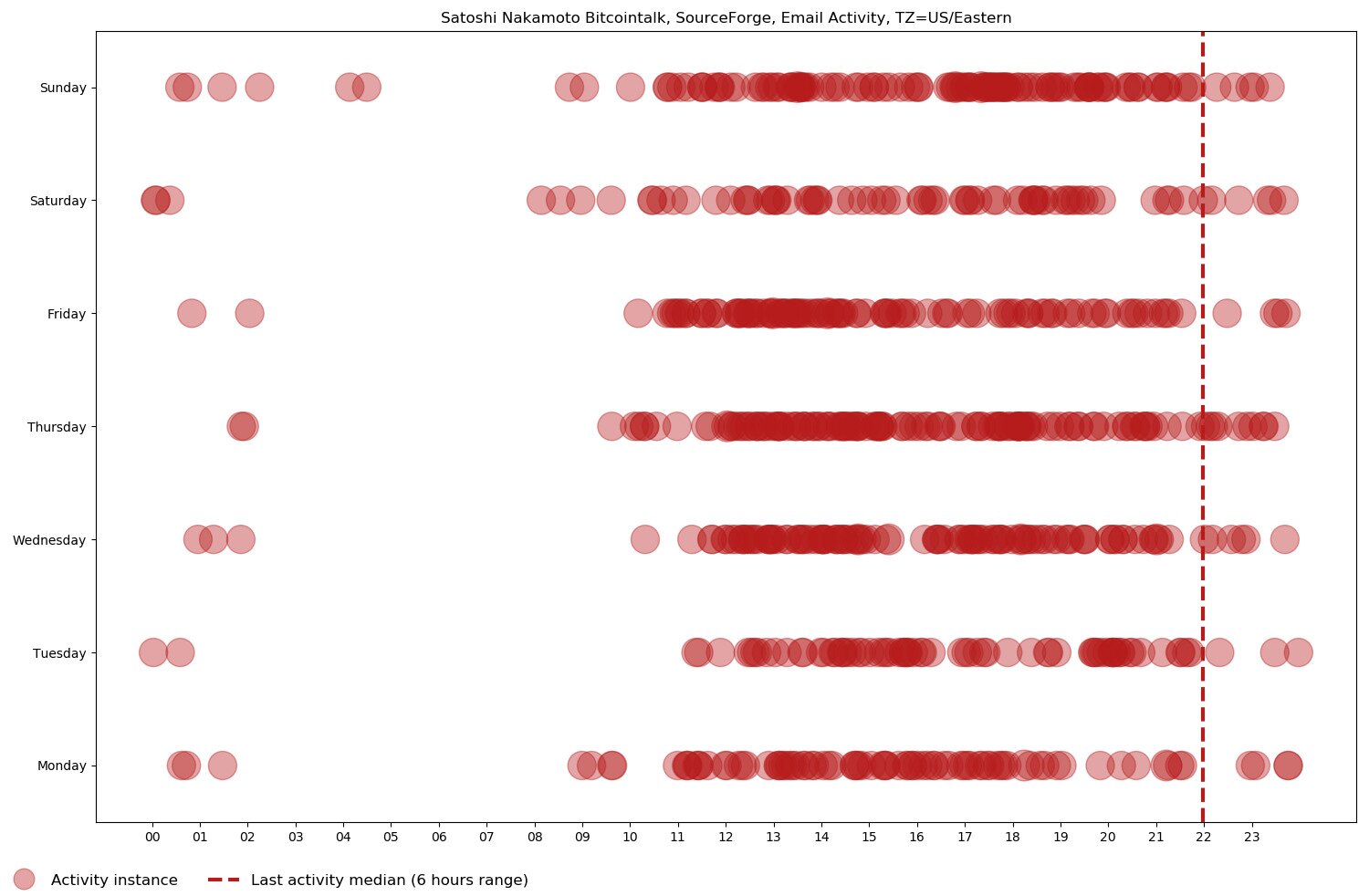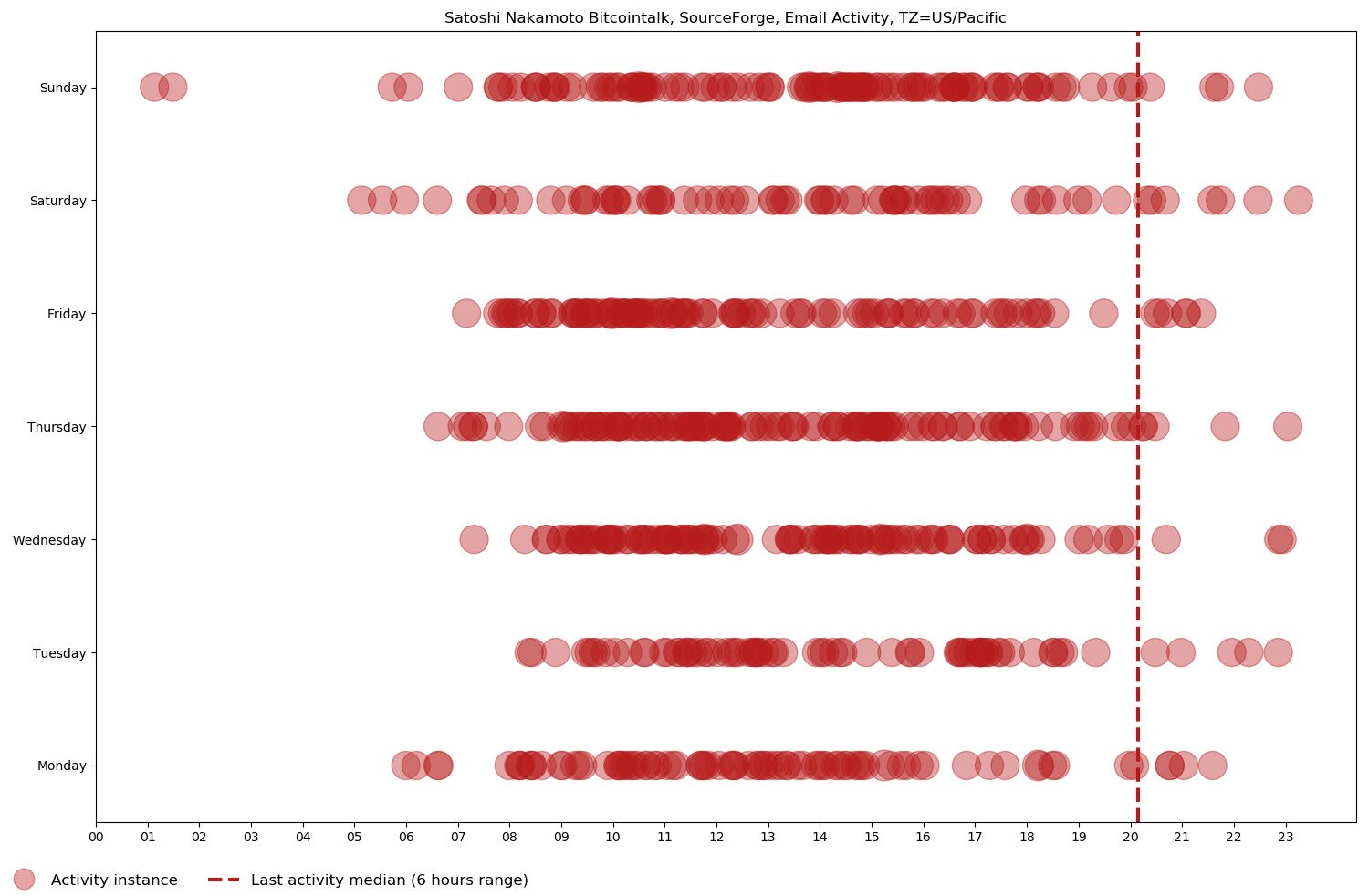- >News
- >Did Satoshi Nakamoto Live in London? Does it Even Matter to Bitcoin?
Did Satoshi Nakamoto Live in London? Does it Even Matter to Bitcoin?
Satoshi Nakamoto lived in London while launching Bitcoin, according to new research published by the Chain Bulletin at the end of last month. The research analyzed the timestamps of Satoshi’s emails, messages and code commits, concluding that the most plausible timezone in which the Bitcoin creator worked was GMT, UK time.
It certainly isn’t the first time that Bitcoin’s birth has been linked with Britain, given the Times headline, as well as the 2016 claim from the London-based Australian entrepreneur Craig S. Wright that he is the elusive Mr Nakamoto.
However, there are two problems with the new research. The first is that, in actual fact, it doesn’t conclusively prove that Bitcoin’s creator was based in London, since American time zones are also consistent with their timestamps (and arguably more consistent). The second problem is that, as with other speculation on Nakamoto’s identity, it entirely misses the point of Bitcoin, which is that the cryptocurrency was created — and exists — through the efforts of many, many people.
Satoshi Nakamoto Lived in London While Creating Bitcoin
The Chain Bulletin looked at the following sources of data that Nakamoto produced while actively working on Bitcoin between October 2008 and December 2010.
-
“Satoshi’s Bitcointalk account (539 available posts)
-
His 34 emails on the cryptography and Bitcoin mailing lists
-
His 169 commits on SourceForge
-
The metadata from Bitcoin whitepaper versions from 2008 and 2009
-
The Genesis block
-
Various Wayback Machine archives”
Taking all of this information, they were then able to plot Satoshi’s timestamp data according to GMT.
Source: The Chain Bulletin
This chart shows that Nakamoto’s Bitcoin activity was clustered around the late afternoon, the evening, and late at night (between midnight and three in the morning). Given that bitcoins were obviously worthless at this point in time, it’s possible that Nakamoto had a full-time job during the day, and then worked on his ‘hobby’ in his spare time.
The research further bolsters its hypothesis by pointing out that Nakamoto largely uses British English spelling, meaning that he tends to use the “-ise” suffix rather than its American English “-ize” equivalent, and so on. It then also points to the now-famous Times headline which Nakamoto quoted in Bitcoin’s genesis block from January 3, 2009:
“The Times 03/Jan/2009 Chancellor on brink of second bailout for banks”
Looking at readership data for the Times, the report notes that 43% of the newspaper’s print readership was based in London in 2008. This is ultimately how it comes to the conclusion that Satoshi Nakamoto, whoever he, she or they were, was living in London around the time of Bitcoin’s launch.
The Counterarguments
The above evidence makes a fairly good case that Nakamoto was in the UK, if not in London. However, there are a number of inconsistencies which undermine this conclusion.
For one, the timestamp data seems to fit more snugly with the Eastern and Pacific time zones in the United States. Here’s the data plotted according to EDT:
Source: The Chain Bulletin
In this chart, there are fewer instances of Nakamoto working into the early hours of the morning. As the dotted line shows, his last activity median for EDT (i.e. the average time each day at which he stops working) would be 10:00pm, whereas if he were in London it would be 03:00am. Was he that much of a night person?
In fact, when you plot Nakamoto’s data according to Pacific time, the overall pattern looks even more normal than it does with Eastern time.
Source: The Chain Bulletin
Here, Nakamoto simply works during the day on Bitcoin. Maybe he does it while juggling a regular job, or maybe he can afford to work solely on Bitcoin during normal working hours. Either way, his activity in this case looks far less likely to lead to sleep deprivation than it would in the UK.
Clearly, timestamp data doesn’t really lend any real, conclusive weight to the London theory (even if it does exclude an Asian or Australasian location). And in actual fact, neither does an analysis of Nakamoto’s spelling.
Yes, Nakamoto does do things like write “colour” instead of “color”. He also writes “grey” rather than “gray”.
Source: Bitcoin Forum
But he also uses the “-ize” ending quite regularly, despite also using “-ise” from time to time.
Source: Bitcoin Forum
Source: Bitcoin Forum
Looking at his posts in the Bitcoin Forum, he actually uses the “-ize” suffix more than the British “-ise” (emails written to Hal Finney also exclusively use “-ize”). This weakens the idea that he was in the UK and/or is British, even if it doesn’t discount it.
Lastly, the use of the Times headline is probably the best piece of evidence in support of the idea that Nakamoto was based in London. However, it’s hardly conclusive proof, since The Chain Bulletin’s researchers themselves admit that digital copies of the newspaper can be accessed by people anywhere in the world. They rhetorically ask why someone outside of the UK would go to the trouble of seeking out a digital copy of the Times’ print edition (rather than using the Times’ website, the headline of which on Jan 3, 2009 included the UK chancellor’s name). However, if the Times offers such a service, then surely there is at least some demand for it.
Bitcoin Was Created By More Than One Person
In conclusion, the available data and evidence doesn’t really prove anything, since it’s not strong enough to exclude the possibility of a North American location for Satoshi Nakamoto.
Still, this shouldn’t really be a problem to anyone who really believes in Bitcoin as a decentralized form of money. Even if Satoshi Nakamoto was only one person (and not a team of people, as some have claimed), he wouldn’t have ever conceived of Bitcoin without the efforts of others, let alone get it off the ground.
People before him had devised cryptographic forms of money, such as Adam Back’s hashcash, Wei Dai’s b-money, and David Chaum’s DigiCash and ecash. These were all ideas Nakamoto used and built upon when writing his Bitcoin white paper, which referenced Back and Dai’s previous work (both proposed a proof-of-work validation mechanism).
And when Nakamoto finished his white paper, numerous cryptographers and other computer scientists were highly instrumental in testing Bitcoin and updating it, including Hal Finney, Gavin Andresen, and others. Now that Nakamoto has apparently disappeared off the face of the Earth (unless you believe he’s Craig Wright), thousands if not millions of people are now responsible for sustaining and evolving Bitcoin.
In other words, the futile hunt for the ‘real’ Satoshi Nakamoto entirely misses the point: Bitcoin is about much more than one single authority figure.










